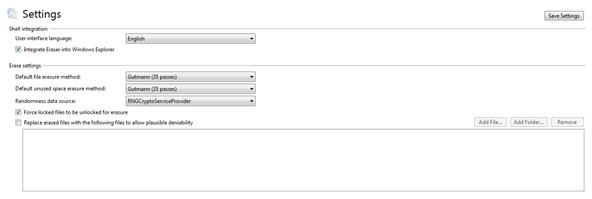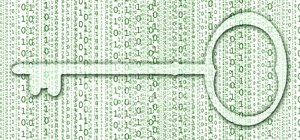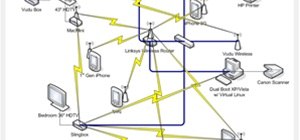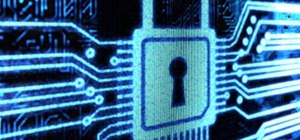Today's tutorial will teach you how to erase data permanently so that it cannot be recovered. Many believe that having a file shredder on the computer means you are up to no good.
So when might you want to use a secure eraser? Lets say you scanned your drivers licence because a Government Department needs it to confirm your identity. It is obvious for something so confidential, you will need to use some form of encryption such as Pretty Good Privacy (PGP). However - you want to sell your computer to earn a few bucks. The issue? Your computer is covered in bank details, scanned copies of your drivers licence, birth certificate, etc.
The solution? Delete it from the recycle bin! One could wish it was that easy anyway. This article will explain how to erase that data so that it can never be recovered.
Requirements
Secure shredders with evidence to support the fact that the secure shredder can erase the data permanently. CCleaner is one and Eraser is another that will do it well.
Now we also need something to password protect our documents and a place to generate long and complex passwords . I recommend Ultra High Security Password Generator and Axcrypt.
Setting up CCleaner to shred confidential data
Run CCleaner -> options -> settings: Ensure "Add Run CCleaner option to recycle bin context menu is checked. Check "Secure File Deletion (Slower)" and change the overwrite to seven passes or a recommended 35 (Gutmann) pass. Further - check "Wipe Alternate Data Streams" and "Wipe Cluster Tips". See the image below.

Setting up Eraser to shred confidential data
Open Eraser -> settings: Ensure "default file eraser method" 35 passes and "default unused space erasure method" is 35 passes. Then click "save settings".

Feel free to also go to -> erase schedule -> task and you can have Eraser erase certain folders or even the recycle bin every day, week or month.

Now that we have installed the recommended software, and configured the settings for maximum results, we will now start the shredding process.
Step 1 Password Protect the document
First - go to the Ultra High Security Password Generator website and collect your password. I recommend the 63-random ASCII characters for ultimate protection.
Next - rename the document to "101010" as you don't want to keep the file name. Then right click the file, hover over Axcrypt then click encrypt. Enter the password but to paste it - press Ctrl + V. Press OK then the file will encrypt itself.
Step 2 Erase the document
Right click the document and press delete. It will then be sent to the recycle bin. Finally, right click the recycle bin and press "run CCleaner".
Conclusion
The document(s) is now impossible to recover and their is no need to worry about identity theft anymore. All the data is erased and unrecoverable. It is also impossible to find out what the file names were.
Just updated your iPhone? You'll find new emoji, enhanced security, podcast transcripts, Apple Cash virtual numbers, and other useful features. There are even new additions hidden within Safari. Find out what's new and changed on your iPhone with the iOS 17.4 update.
























5 Comments
Very thorough. I've heard that newer SSDs don't require this as there is no tracable memory once the bits are zero'd out. Do you know if that's true?
Not too sure to be honest. I haven't switched to SSD. However after doing a general Google search CNET showed up with an interesting article. It states that the normal secure erasing utilities (Such as CCleaner and DBAN) don't work very well with SSDs. It however suggested to use Secure Erase (HDDErase.exe) but it doesn't look like that program is being maintained anymore. The second option would be to use Parted Magic which you can read more about here on CNET: https://howto.cnet.com/8301-11310_39-20115106-285/how-to-securely-erase-an-ssd-drive
Parted Magic direct download: http://partedmagic.com/doku.php?id=downloads - does this help answer your question? Cheers :-)
It's entirely true. As soon as the data is released, it's gone forever. That's why I use one in my computer now, it's worth not having to shred everything every time you need it gone.
**Delete my post above? There seems to be no delete button for your own posts.
OK, now show me a way to prevent even a rookie computer person from knowing exactly what you did.
To erase data permanently on disks with bad sectors, you need WBD(Wipe Bad Disk).
Share Your Thoughts